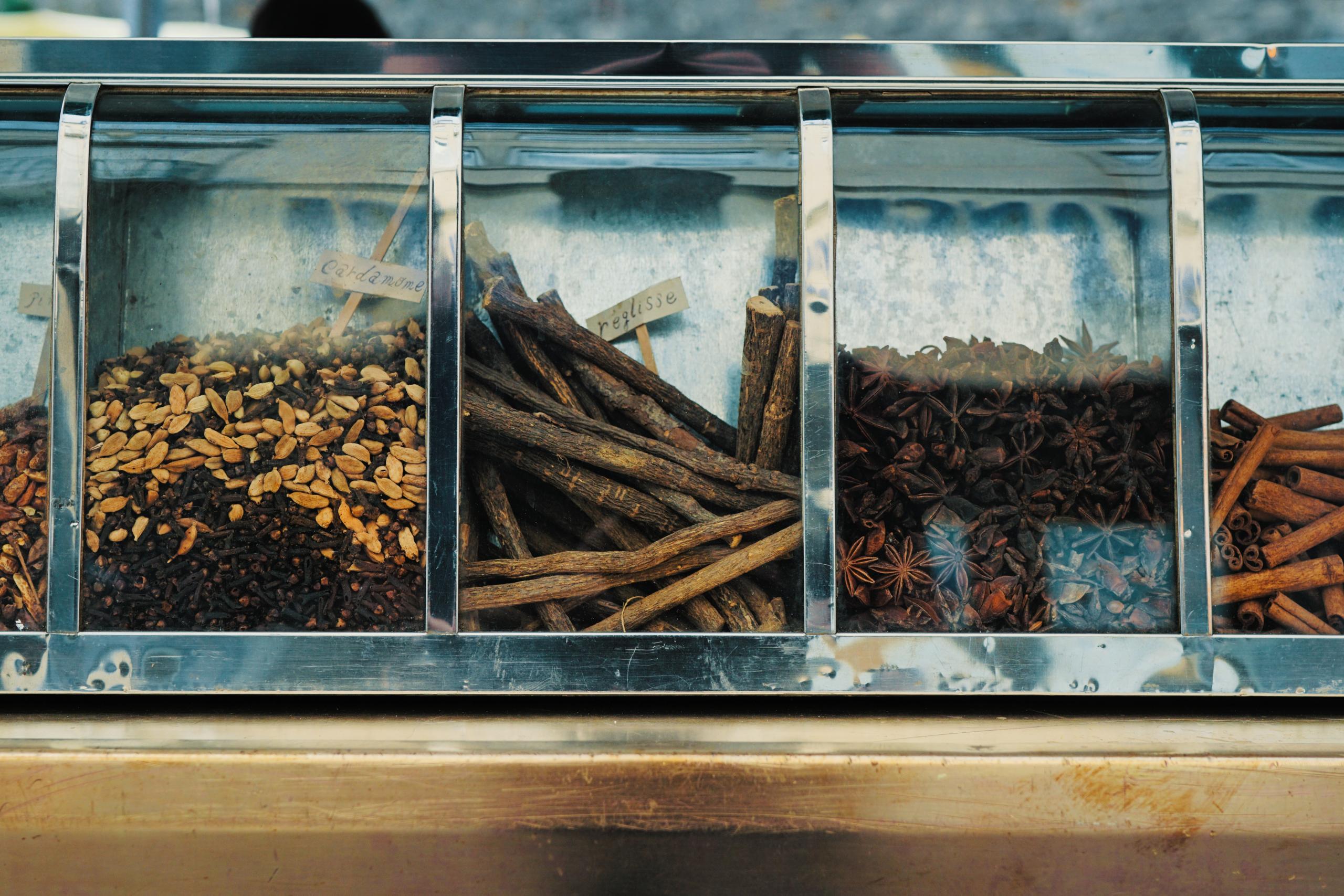
All you need
to know about
Anis
in a nutshell
Anis based spirits is what unites many mediterranean countries. This very peculiar flavour can be found since centuries in France as well as in Greece or in Tunisia or Cyprus. It is at the origin of many spirits such as sambuca, ouzo or absinthe and pastis. It is one of the oldest category of spirit. Some of the spirits below may also be found in other category, indeed many are also pomace based spirits. Always be flexible in the way you approach a spirit category. They are permeable.
The regulations around anis flavored beverages
The EU regulated most of these spirits. Anise drinks must obtain their flavour from green anis, fennel or star anise and it must be the dominant flavour.
Here is an extract of the EU regulation.
a) Aniseed-flavoured spirit drinks are spirit drinks produced by flavouring ethyl alcohol of agricultural origin with natural extracts of star anise (Illicium verum Hook f.), anise (Pimpinella anisum L.), fennel (Foeniculum vulgare Mill.), or any other plant which contains the same principal aromatic constituent, using one of the following processes or a combination thereof:
(i)maceration and/or distillation,
(ii)redistillation of the alcohol in the presence of the seeds or other parts of the plants specified above,
(iii) addition of natural distilled extracts of aniseed-flavoured plants.
(b) The minimum alcoholic strength by volume of aniseed-flavoured spirit drinks shall be 15 %.
(c) Only natural flavouring substances and preparations as defined in Article 1(2)(b)(i) and Article 1(2)(c) of Directive 88/388/EEC may be used in the preparation of aniseed-flavoured spirit drinks.
(d) Other natural plant extracts or aromatic seed may also be used, but the aniseed taste must remain predominant.
The geography of the anis based spirits
If there is one spirit from the mediterranean, that’s this one!

The history of the anis based spirits
Anise has been used for several centuries as a medicine, and is still used today in cooking and for the production of alcoholic beverages.
In France, the Corporation of the King’s Anysetiers, a guild of practitioners who used anise, was founded as early as 912 AD, while the qualities of this plant were already known to the Babylonians.
It was when the British Thomas Cavendish brought star anise or star anise from Asia in the 17th century that anise infusions became fashionable in Europe.* (see sources below)
They are many anis flavoured spirits (and liqueurs) and it is no point of covering them all.
See a non exhaustive list below:
Pernod (France)
Pastis (France)
Anisette (France)
Absinthe (Switzerland, France)
Mistra (Greece)
Ouzo (Greece)
Anesone (Italy)
Sambuca (Italy)
Kasra (Lybia)
Arak (Middle east)
Raki Middle east)
Abis (spain)
Ojen (spain)
Tsipouro (Greece)
Mastika (Greece)
Anesone (Italy)
….
You’ll find more details on the next columns about some of them.
How are the anis based spirits made?
The ingredients aka the base material of the anis based spirits
Anis
To obtain the aniseed flavour spirits, they must contain ingredients such as: star anise, anise and fennel and alcohol.
Alcohol
The raw material for aniseed drinks is neutral alcohol of natural origin, made from grapes, grains, dates or even, in Turkey, beet molasses.
Those made from neutral alcohol: pastis, absinthe, ouzo
Those made from flavoured wine brandy (wine distillate or pomace): sambuca, tsipouro, raki. The brandy is sometimes re distilled (like for absinthe or arak), sometimes directly bottled after dillution (like for ouzo).
Herbs, etc
See below!
Anise (Pimpinella anisum) is a herbaceous plant species of the Apiaceae family, grown as a condiment plant for its aromatic leaves and seeds. The plant is sometimes called green anise. It has a taste quite similar to that of liquorice. The key ingredient of this plant is an organic compound, anethole, 13 times sweeter than sugar, very little soluble in water but highly soluble in alcohol.
Pimpinella anisum is however expensive and hard to get. It is difficult to cultivate as it requires a lot of sun and also a constant humidity. The dependancy changed once star anise was brought back from China.
Star anise, staranise, star anise seed, Chinese star anise, or badiane (Illicium verum) is a medium-sized evergreen tree native to northeast Vietnam and southwest China. It resembles anise in flavor even though they’re not from the same family. Star anise contains anethole, the same compound that gives the unrelated anise its flavor. It is long to get mature, but after 25 years the tree are in full maturity and they can give up to 45 kg of fruits, twice per year.
Liquorice (Glycyrrhiza glabra) a small tree, evergreen, originating from the Mediteranean but also to be found in Asia. The roots are used into the making of many anisseed based spirits.
Fennel (Foeniculum vulgare) is a flowering plant of the carrot family. It is a very aromatic and tasty herb with a similar taste than Anise. Like Estragon, it contains anethole.
The fermentation of the anis based spirits
No conversion per say but the different ingredients require to be transformed.
Anise, for example, must be harvested before maturity to dry, then distilled in order to extract the essential oil which is then rectified (i.e. purified). This results in an extremely concentrated (and sweet) anethole extract.
Licorice, another example, requires the extraction of the aromatic compounds from the roots of the licorice plant. First the sticks are reduced to fine straws and then macerated in a mixture of water and alcohol for five hours. There is no fermentation process other than the one needed to obtain pure alcohol.
The distillation of the anis based spirits
Depending on the type of drink you want to obtain and the brand’s particular production method, neutral alcohol, which is at least 96° vol., is either redistilled or macerated with aromatic plants.
Distillation of pastis
This flavouring can be obtained by three processes (or a combination of all three):
– maceration or distillation,
– redistillation of alcohol in the presence of these plants,
– addition of distilled natural extracts of aniseed plants.
Distillation of Raki
Raki is distilled twice from grape must, sometimes mixed with pure ethanol. Raki is to be found in Turkey. It is very similar to fine and marc but what differs is the addition of anise to the final drink. There are different styles of raki depending on the type of distillation.
The different qualities are: the yeni rakı (new raki) grading 45%, of which 65% must come from grape distillation; the altınbaş rakı (golden head) and the kulüp rakı (club) grading 50%, of which the alcohol comes entirely from grape distillation.
Distillation of Ouzo
As for the best ouzo, it is distilled once to reach 96% abv. before adding star anise, often with other herbs and spices. More precisely, the neutral alcohol of agricultural origin is mixed with herbs and then distilled; the product is then either mixed with pure alcohol (the percentage of distilled product must be at least 20%) or simply diluted with water to reduce its alcohol content (the cost is then higher).
Distillation of Arak
Arak is also distilled twice, but the second time it is already infused with anise. Indeed the resulting distillate is mixed with aniseed and diluted with water prior to a final slow distillation in a pot still, it is important to not go too high in temperature so that you’ll have more of the flavour of the anise into the distillate.
Distillation of Sambuca
Sambuca is obtained by steam distillation.
What can be added to anis based spirits before bottling?
Post distillation addition in Pastis making
The yellow colour of pastis is due to a colouring agent, often caramel. There are white pastis without colouring.
For pastis, only a maximum of 100 gr sugar per liter is allowed.
Post distillation addition in Sambuca making
At least 350 g of sugar/L is required for sambuca before it gets bottled.
THE OUZO EFFECT?
Anethole, which is not very soluble in water, causes the color of the liquid to change and creates the famous opalescence of anis based spirit, also named « louching ». According to Wikipedia: The ouzo effect (also louche or spontaneous emulsification) is a cloudy (louche) oil-in-water emulsion that is formed when water is added to ouzo and other anise-flavored liqueurs and spirits, such as pastis, rakı, arak, sambuca and absinthe. Another note: anything with anis must be stored at a temperature above 12°C otherwise anethole crystals will appear (they dissolve when the bottle gets warm).
The styles of anis based spirits
Ouzo
Ouzo is a Greek aniseed alcoholic beverage made from neutral alcohol mixed with various herbs and then distilled and diluted.
To be more precise: the law stipulates that it must be distilled from a minimum of 30% grape residue but the rest can be distilled from cereals or other fruits to which are of course added aniseed seeds and other aromatic seeds (coriander, cloves, cardamom…) which give this characteristic taste to the alcohol.
Tsipouro
Tsípouro is a brandy made from marc. Various flavours can sometimes be added during the first or second distillation, like aniseed but not all tsipouro are flavoured! The Thessaly and Macedonia Tsipouro is generally flavoured with aniseed, which brings it closer to Turkish raki but other variety such as the one produced in Crete is never flavoured for example.
Pastis
According to European regulations, pastis is the result of the flavouring of a neutral alcohol of agricultural origin with extracts of green anise, star anise, fennel or any other plant containing the same main aromatic component, as well as natural extracts from liquorice wood.
Mastika
Mastíkha is a broad term referring to a set of alcoholic beverages most often aniseed, produced in Bulgaria, Greece and the Republic of Macedonia.
This brandy-based Greek liqueur is flavored with gum mastic on top of the sometime aniseed.
Raki
Raki is an aniseed flavoured pomace spirit. It is consumed in Turkey, the Balkans, Armenia and the Middle East. And it is probably the oldest of the anise family. There is a Greek raki, but it has nothing to do in an anis based spirit 101. If Turkish raki is
made from anise-flavoured spirits, which gives a similar taste to Greek Uzo, Greek raki is a pure brandy without additives, no anis addition.
More about Raki in the Marc and Fine and other pomace based spirits 101.
Sambuca
Sambuca is the name given to a sweet and strong Italian cream liqueur made from star anise, created in Civitavecchia, in the province of Rome, in 1851.
Arak
Arak, arac or arack is a wine brandy traditionally consumed and produced in the Middle East. It is made by distilling wine which is then mixed with aniseed and distilled a second time. It then ages in clay jars. Turkish raki, Greek ouzo resemble arak but are lighter in flavour.
Be careful of the spelling and do not confuse Arak with the very different East Asian liquor such Batavia Arrack or Ceylan Arrack which is not anise flavoured, and closer to rum.
RESOURCES/SOURCES
Been very much helped by my bedside favourite The Drunken Botanist, by Amy Stewart, the two French speaking Alcools by Andre Hominé and Bières, Vins et Spiritueux à travers le monde by Stuart Walton and Brian Glover (the original book is in English though) and Distilled by Joel Harrison and Neil Ridley.
And of course checking wikipedia from time to time is very helpful.

